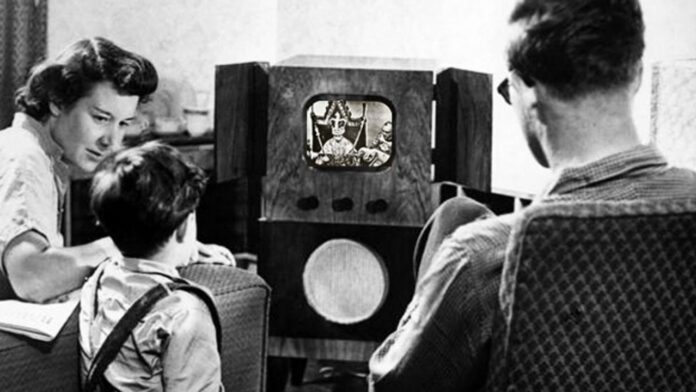Because her coronation in 1953 was televised all over the world, Britain’s Queen Elizabeth gave a big boost to the television industry at the time. Eindhoven also benefited greatly from this.
Early developer of TV
Eindhoven led the way in developing TV technology and producing TV sets in the early 1950s. But the technology had not yet caught on with the general public. Television sets were expensive and there were few programmes to watch.
Sceptical about the medium
“Moreover, in the early 1950s, a lot of people were very sceptical about the medium,” says Sergio Derks of the Philips Museum. “People thought it would be a very bad influence. That’s why development was very slow.”
Eindhoven benefits
That changed when Queen Elizabeth’s coronation was broadcast around the world. It was the first international live broadcast and the images had a huge impact. Derks: “That broadcast won over a lot of people. In that respect, you can indeed say that Elizabeth gave an enormous boost to TV sales. And Eindhoven certainly benefited from that too.”
Market leader
Philips was market leader in the Netherlands in the early 1950s. After the initial boost in 1953, sales of black-and-white TVs went up and peaked in the late 1950s. Philips also sold a lot of TVs in England. “There was even a branch, Philips England. But I do not have the exact figures for that”, says Derks. This development is also mentioned in the book Wonder of Eindhoven – journeys through the history of the City of Light, written by Arno Kantelberg: “After the live broadcast coronation of England’s Queen Elizabeth II in 1953, sales in the Netherlands took off. By 1960, there was an appliance in more than 600,000 Dutch households”.
Queen’s affinity for technology
The timing was of course right, but it was not entirely coincidental that the British monarch’s registered coronation had such an impact. After all, from her childhood she had had a remarkable interest in technology. At eighteen, in the middle of World War II, the queen was trained to drive military vehicles as well as tinker with them. Once she was queen, she remained an early adopter of new technologies.
For instance, she was one of the first to send an e-mail. In 1976, she used a military device connected to the ARPANET, a computer network that eventually led to the internet as we know it today. At eighty-three, Elizabeth II arranged a Twitter account for the British royal family, followed a few years later by Instagram.
Role model
This made the monarch a role model for other older people when it came to dealing with technology. This is also stated in a scientific article Studio040 found in the archives of the Eindhoven TU. The story, co-authored by Eindhoven professor Annelies Bronswijk, lists all of Elizabeth’s technological exploits. With the TV broadcast of her funeral on Monday, Elizabeth once again reaches a large audience, spread all over the world. Although there is a difference in scale; this time it is not millions, but billions of viewers.
Source: Studio040
Translated by: Anitha Sevugan
















